All about carved pillars
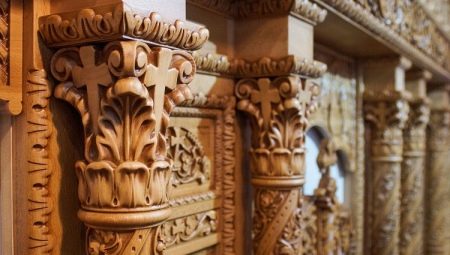
Wooden pillars are supports for some types of buildings, they hold and distribute the load of the structure. They are used both indoors (to create stairs) and outside, in the garden, erecting fences, gazebos, terraces. The owners of private houses, trying to give uniqueness to their buildings, use wood carvings to decorate pillars and other wooden elements.

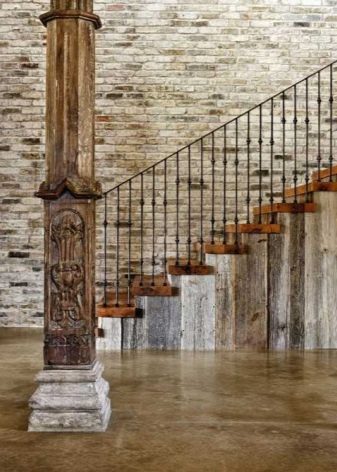
What it is?
The pillars, which will be discussed in the article, belong to the architectural and construction elements of wooden structures. They are endowed with three components:
- basis, with which the support is fixed to the surface;
- barrel (directly by the pillar itself);
- small caps - the upper part of the product taking over the coating.
Wood carving has always been in the Slavic tradition. A structure such as a pillar is an ideal subject for the realization of the master's imagination. You can make a solid sculpture out of it, or show your skill in endless curly details that hold the admiring gaze of the viewer for a long time.
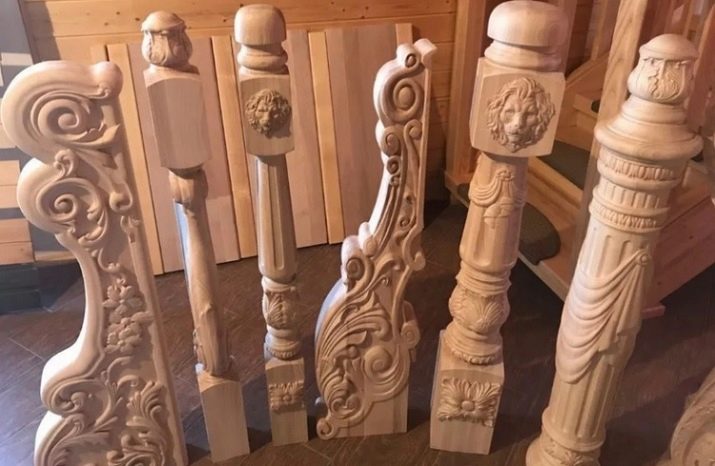
Building pillars are made in two ways:
- the first is made of laminated veneer lumber;
- the second, more expensive option, is made from solid wood.
It is the solid pillars that can withstand heavy loads. The use of carved wooden poles outdoors becomes possible after careful antifungal treatment and the application of a protective coating.

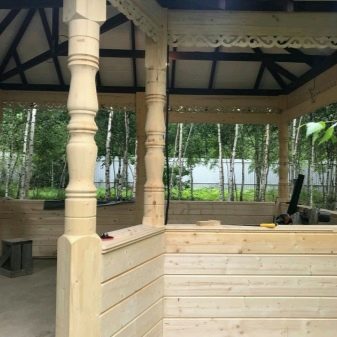
Advantages and disadvantages
Carved pillars in the architecture of gazebos, terraces, perlog and stairs are of particular value, their advantages are obvious.
- Reliable support. The pillars play a special role in structures without walls; the load from the entire roof falls on them.In this case, the safety of the gazebo or terrace depends on the strength of the supports.
- Visual increase in volume. The roof on pillars protects from the rain and the scorching sun, the terrace beneath it seems high and spacious. It is the absence of walls that relieves the space, and the pillars, even without them, do an excellent job with the function of the supports.
- Aesthetic dignity. The carved architectural structures are incredibly beautiful, they hold the gaze regardless of the scale of the creation. The small carved balusters of the stairs are just as good as the giants supporting the roofs of the gazebos.
- Easy to install... The poles are much easier to install than to erect a wall, and the payment for such work will be cheaper (we are not talking about settling with a woodcarver).
- Environmental friendliness... Such structures are pleasant to the touch, have energy value and are harmless to others.
- Exclusivity... At the request of the customer, the plot of the carving can be unique and not be repeated in other products.
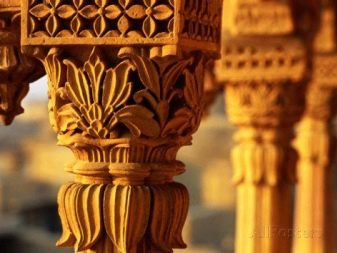
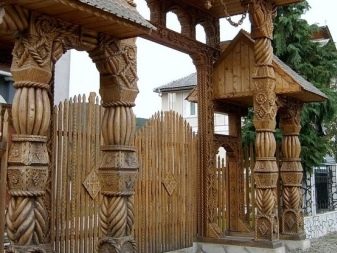
There are also drawbacks to artistically designed pillars:
- they are expensive;
- are made for a long time;
- with poor processing in outdoor conditions, wood loses its attractiveness over time;
- wood products require periodic maintenance and restoration.

What is the thread?
To work with pillars, the same methods of artistic carving are used as for all other objects made of wood. The peculiarity of the carving on the pillars is the advantageous use of their volume, for example, it is more difficult to convey a realistic image on a flat table top to the viewer. The most popular techniques can be noted.
Sculptural
Thanks to the sculptural carvings, the wood material is delivered in the best possible way. It has a three-dimensional image and is a full-fledged sculpture of a person or an animal.... This is a more complex form of art that requires a master of real artistic talent and knowledge of geometric proportions.
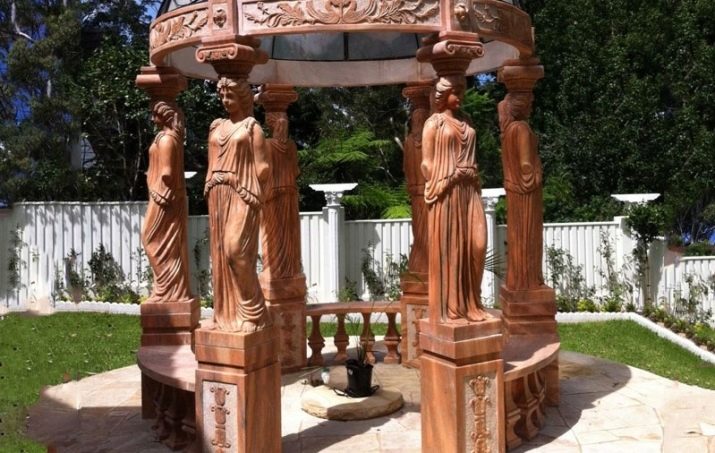
Embossed
During the relief carving, the general background of the product sinks inward, and the volumetric image is located above it. This method allows you to make a thread more realistic.
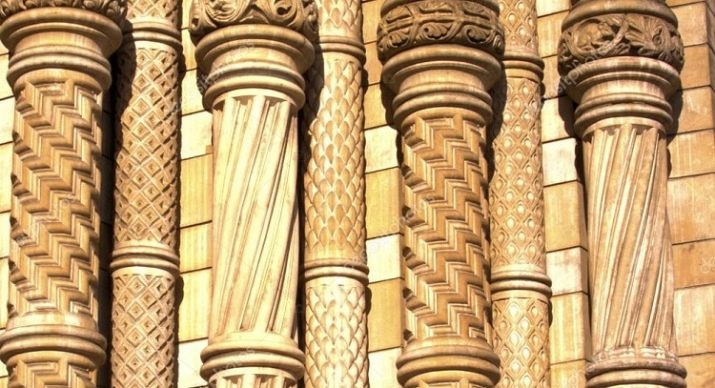
Flat-relief
This technique is the opposite of the embossed method. The pattern is carved into the surface of the tree, gradually deepening into it, while the background remains at the initial level.

High relief
This kind of art is also called geometric, for the use of strict proportions and shapes in the creation of patterns.
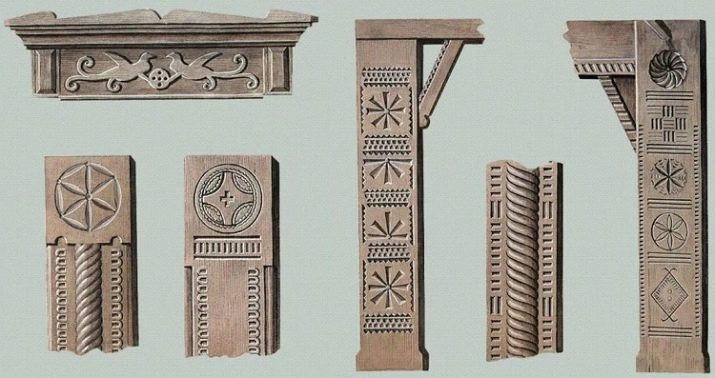
Slotted
This technique involves cutting through the surface layer, creating openwork lace from wood. It is impossible to fully apply the slotting technique to the posts., it will take a lot of effort and they will lose their support function. The creation of the finest lace ornament on the surface of such a product will acquire elements of embossed technique. Sometimes the pillars are simply decorated with shields with a see-through ornament, which can be seen on the example of a gazebo.
The slotted technique also creates decorative poles, such as floor lamps.
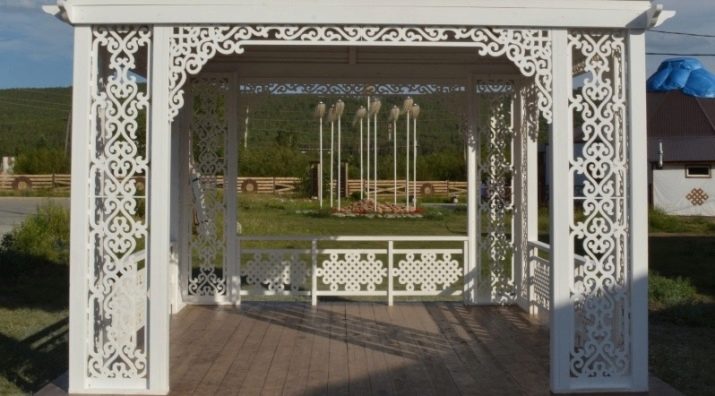
Materials (edit)
Wood comes in different densities. Hard varieties such as larch, white acacia, Karelian birch, hornbeam, oak, maple are expensive, but they will last a long time in the external environment. For indoor stairs, you can use pine and other inexpensive conifers. It should be remembered that it is more difficult to work with dense wood, the most exquisite patterns are obtained from soft, pliable varieties.
For the aesthetic perception of the carved product the structure of the tree is important. Tropical plants have the most expressive patterns. Of the flora of temperate latitudes, the most beautiful texture is oak, maple, plane tree. Drawing on a cut of a tree can be in the form of rings, stripes, blotches.
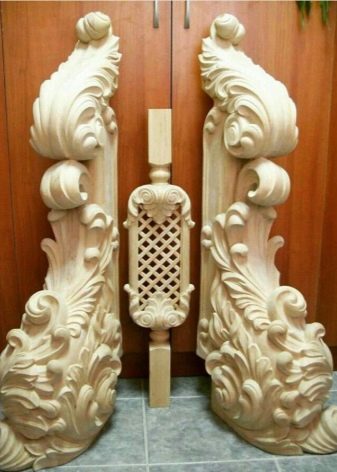
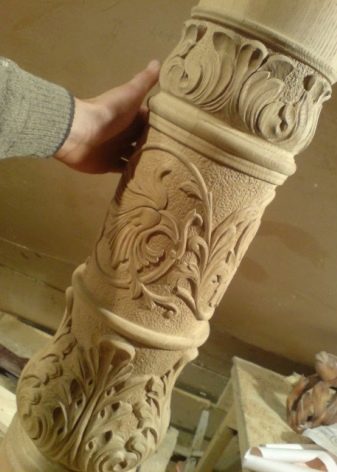
Shapes and sizes
The shapes of the carved pillars depend on the imagination of the customer. But most often round options are chosen, they correspond to the natural shape of the log. The most spectacular types are sculptural items. Externally, curly wooden pillars may look like:
- square;
- round;
- resembling a triangle;
- wavy;
- conical;
- flat;
- sculptural.
In terms of dimensions, there are no standards for decorative poles. They depend on the parameters of the architectural structure. The similarity of standards can only be found in the ladder business. On sale there are ready-made intermediate and lead-in carved products with section sizes - 80 by 80, 100 by 100, 120 by 120 mm, as well as 150x150 mm. They are used both for building staircases inside the house and for the porch.
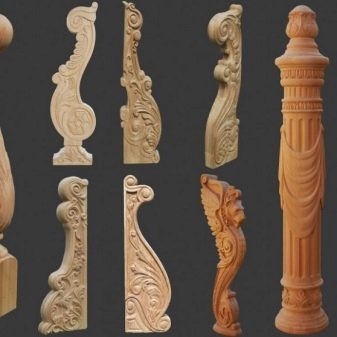
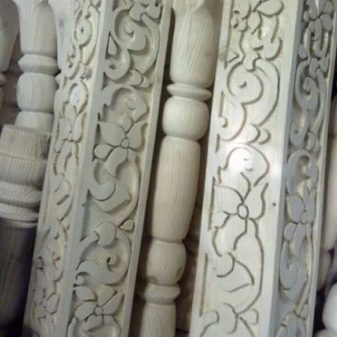
Use cases
Pillars are used as supports for many buildings. After the work of the cutter, the product, in addition to its functional qualities, also acquires decorative possibilities. Supports are manufactured for internal and external use. Outdoor options are made from hard wood and treated with special impregnations that protect the material from decay. External pillars are used for all kinds of buildings.
- Porch. Carved supports hold the canopy and become a decoration of the main entrance to the house. They are combined with curly balusters of a small ladder or support the theme with a carved border of the canopy.
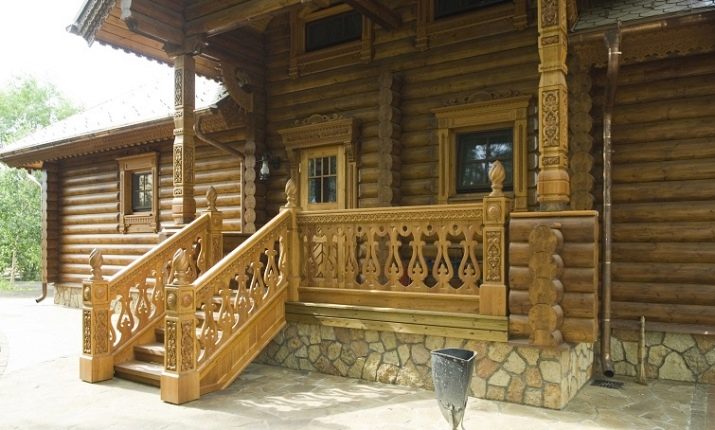
- Garden furniture, perlog, terrace. Beautiful decorative pillars take on the weight of the roof. Patterns and sculptural forms should not prevent them from coping with their main task - to be a reliable support for the garden structure.
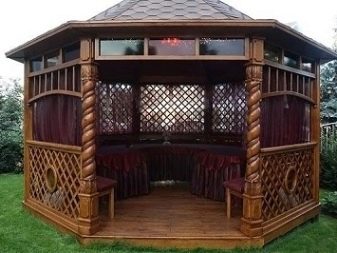
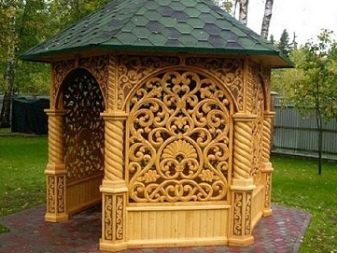
- Intermediate fence posts and gate supports. These products can be considered the hallmark of the entire estate, because they are initially seen by guests and every passer-by. Carved pillars will surely attract attention, emphasize the taste and status of the owner.
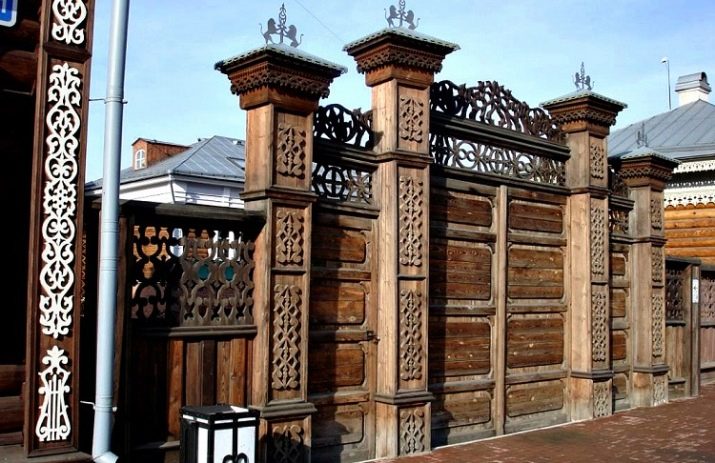
- Free-standing pillars. They are beautiful products made in any carving technique. They are used by landscape designers to decorate the site.
Garden lights are often inserted into openwork hollow models, which are effectively illuminated at night.
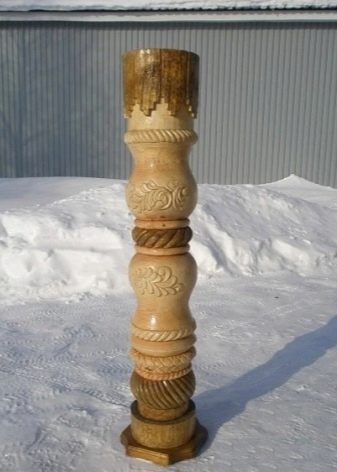
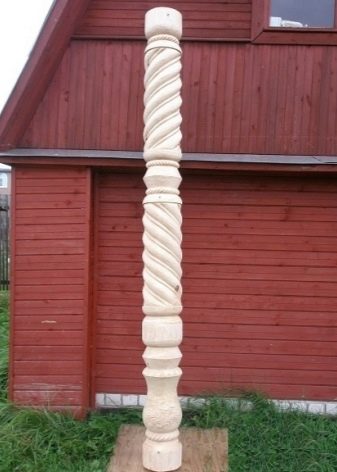
- Balconies. In private houses, barriers on balconies can be made in the form of carved posts. This technique is especially often used in combination with other similar buildings - an artistically decorated porch, bench, roof.
Carved pillars are used to decorate playgrounds, as supports for garden swings or hammocks.
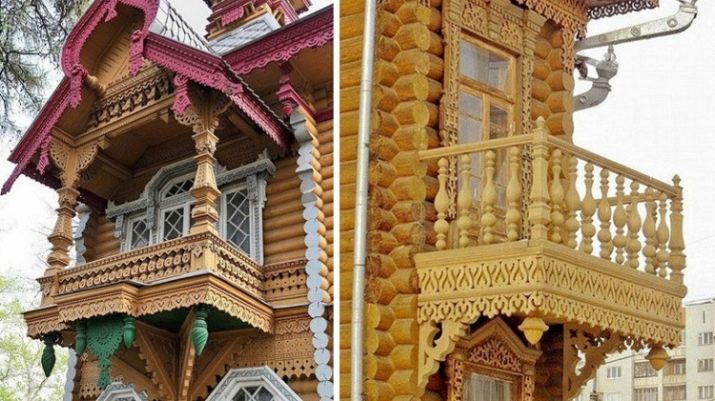
Inside the room, the artistic supports look amazingly impressive, they create a special atmosphere of sophistication and comfort. Supports are used in different versions.
- Delightful carved staircases contain pillars and balusters of fabulous beauty.
- Large halls are often zoned with carved decorative columns. They are also used in rooms with low ceilings to visually "stretch" the space.
Carved pillars are ideal for wooden houses. They are also good for stone buildings with additional artistic carvings.
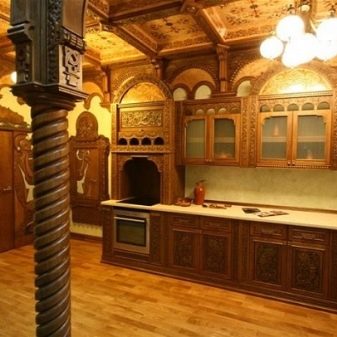
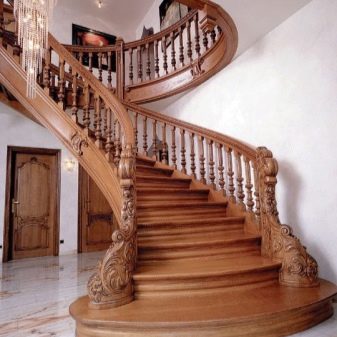
For information on how to make beautiful carved pillars with your own hands, see the next video.








